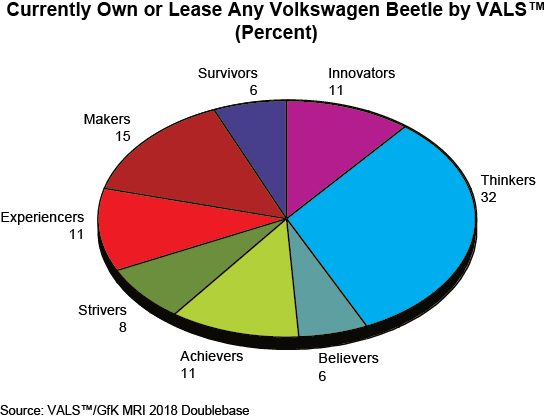Goodbye Beetles August 2019

The original Beetle (Volkswagen's [VW's] Type 1 compact car) is a rear-engine, two-door economy car. Although Bela Barenyi of Mercedes-Benz developed the original technical drawings in 1925, Ferdinand Porche receives credit for creating the original version of the Beetle, whose introduction was in 1938. VW has produced more than 21 million Beetles since the public introduction of "the longest-running and most-manufactured car of a single platform ever made," according to Wikipedia.
The idea behind Volkswagen was for a "people's car." Unlike the US market, where Ford's Model‑T became the first car for the masses, the European market saw domination by luxury cars that the mass market could not afford. A people's car needed to be both affordable and practical—affordable initially by selling through a savings-booklet scheme in Germany, and practical by being able to transport a family of five at a sustained cruising speed (maximum of 100 kilometers per hour or 62 miles per hour), while using no more than 7 liters of fuel per 100 kilometers. VW introduced Beetles to the US market in 1950. The vehicle was so successful overall that in February 1972, Beetle production surpassed that of the Ford Model‑T.
Beetles have been in production for 80 years. Citing decreasing demand, Volkswagen stopped Beetle production for a two-decade hiatus beginning in the late 1970s; production resumed in the late 1990s. Fast forward to 2017: Once again, Beetle sales are in decline. In 2017, only 15,166 Beetles sold (according to Autodata Corp.). And so, for the second time in its history, VW plans to cease production of its third-generation Beetle in July 2019. The Beetle may resurface, however: Autoweek reports that Volkswagen CEO, Dr. Herbert Diess, says, "Volkswagen is evolving into an SUV [a sport-utility-vehicle] brand."

VW Beetles are a great example of how more recent Thinkers buyers of the car may express a bit of fun without sacrificing any of the economical and practical values these consumers are looking for. Older Thinkers and owners of earlier-generation Beetles may be members of Volkswagen fan clubs, tinkering with the cars to keep them in good shape for their historical significance and to remind passersby subtly of the existence of this quirky long runner. A popular German anecdote is about VW and renowned professor of cognitive science and director at the Max Planck Institute, Gerd Gigerenzer. Dr. Gigerenzer—like many academics who are Thinkers—frequently mentions that he launched his career as a banjo player in a VW commercial for the Beetle's eventual sister car, the VW Golf.
College-bound Experiencers may own an older or newer Beetle as an ironic, countercultural statement, echoing the resurgence of popularity of cultural misfits such as the late public broadcast stations' educational painter Bob Ross, whose YouTube channel is wildly popular among college students and who remains in conversation because of his quirky narrative style and appearance on old TV shows. Given the trend toward SUV production among many carmakers, to discontinue the Beetle makes fiscal sense; Thinkers have already been focusing their dollars on practical, modern offerings, such as the Subaru Forester and Outback models. The future may see a revival of the Beetle in larger, SUV form, perhaps inspired by the many offshoots of the vehicle, including the popular Beetle-based dune buggy.
To learn more about the VALS types and the most appropriate VALS target for your business, contact us.
Visit the Why-ology Library and VALS homepage for more articles. Now featured: